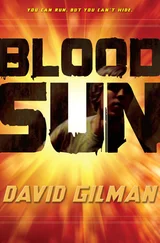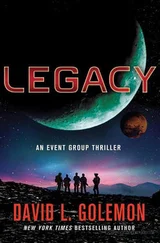While he opened his cartridge pouch to retrieve his last detachable cylinder, a Cheyenne dog soldier, attempting to count coup on him, lunged with a long, red, striped staff. He easily dodged the feathered tip and grabbed for the coup stick, dropping his pistol at the same moment. He pulled the Indian close to him by yanking on the pole and started hitting him with his gauntleted right fist. As he brought up his hand to strike another blow, a bullet struck the warrior in the back of his head. Keogh tossed away the coup stick and then noticed that it had been a nineteen-year-old private that had come to his aide. The captain had just dipped his head in thanks when an arrow pierced the young trooper in the neck and the boy fell. At the same moment, a bullet creased Keogh's forehead through his straw hat and almost knocked him down. The hat flew from his head and was caught in the dust storm being thrown up by the circling Indians.
Captain Keogh shook his head to try to clear his vision, not realizing blood from his head wound had clouded his right eye. He shook his head again as he tried to find his horse, Comanche. The big roan, disciplined as always, stood at the center of the three companies, his reins hanging free. Keogh started walking, struggling to gather his thoughts. Where were they, anyway…the Big… no, the Little Bighorn? Yes, that was it, the Little Bighorn River. He kept the name running through his mind, concentrating hard on those words as he fought to stay conscious, and then he finally reached his horse.
Instead of reaching for Comanche's reins, he started untying the saddlebags. He reached inside and pulled out a long chain from a steel box. He could barely see and tried in vain to wipe the blood from his eye. He felt the chain through his thick gloves and was satisfied at the touch of the Saint Christopher; next to that were his prized papal medals, and then he finally felt the cross. It was the largest of the four objects, a full seven inches long. He slid the chain around his neck and ran his fingers along the cross once again. He hoped the sight of the holy cross and the two medals would keep the hostiles from mutilating his remains. His breath was coming rapidly now and he felt as if he were starting to lose his battle with staying conscious. Comanche jerked and screamed as a bullet went through Keogh's McClellan saddle and struck the animal across its back. The movement spun the captain around, and that was when things seemed to slow to a crawl as if he were only dreaming this disaster.
Down below his engagement and behind a solid wall of swirling dust, a warrior named Crazy Horse and several hundred Sioux were ending a fight that would haunt the U.S. Army for a hundred years and send the great Indian nations into a bleak future.
Before Keogh struck the ground he saw the guidon for his own company falling just as he was. The letter I emblazoned in red struck the grass and lay there. The captain hit the ground as two arrows found the trampled yellow grass next to his head, tossing soil onto his face as he lay blinking against the sun. He didn't even react when a third arrow struck him in his side. He clutched the cross to his chest and prayed and waited.
For ten miles around companies C, I, and L, 265 men of the United States Army's most elite fighting unit, the Seventh Cavalry, met their fate with bullet, lance, and arrow. On a hill overlooking the spot where a foolish man with long yellow hair and a buckskin jacket struck the ground, his swallowtail blue and red flag soon following, Captain Myles Keogh held onto his cross and died. And with his death, he took with him a secret from hundreds of years in the past — lost with the rest of the Seventh in the Valley of the Little Bighorn.
Some things that have been created by the mind and hand of God have been placed in the most inaccessible places on our world for a reason. Do not search them out, for one day they may be unleashed upon the world of men, and the minimal and horrible mistakes of our Lord God will become the inheritors of the earth.
— FATHER EMANUEL D'AMATO, ARCHBISHOP OF MADRID, 1875
MADRID, SPAIN PRESENT DAY
The woman paced in the small, cluttered office, pausing for a brief moment to look at the old man sitting in the swivel chair behind an ancient mahogany desk. He was dressed in a chambray work shirt and wore carpenter's overalls. The thick, horned-rimmed glasses would slide down his nose and he would absentmindedly push them back up to their proper place. He handled the old letter, a set of orders actually, carefully and with the necessary respect one had to show documents of that age. The woman wiped away the sweat on her brow and then without thinking about it pulled her blond hair back and slipped a thick rubber band around it, forming a ponytail. She then turned to look out of the five-hundred-year-old leaded glass window, which gave a blurry, skewed look to the world outside.
San Jeronimo el Real was one of the oldest Catholic churches in Spain and was currently closed for a much-needed engineering renovation. The beautiful Gothic building dated back to 1503 and had already seen many restorations, but this time it was work that would allow the building to stay on its original foundations for another five hundred years. The hammering and sound of jackhammers echoed in the ancient edifice, while outside in the streets many of Madrid's older population passed by and crossed themselves in reverence of the church.
"My dear professor, this letter," the man lightly brushed his right index finger across the dried ink, "could be a clever forgery, have you even considered that?"
The woman turned away from the window to face the archbishop of Madrid. The old man carefully laid the letter down and gently tapped the two pages together, carefully aligning them on his desk blotter. The woman noted the delicate way he handled the pages and knew he believed them to be authentic. She stepped to a chair, opened her small case, and removed a laptop. She typed in a quick command and then laid the computer on the archbishop's desk, carefully avoiding the old text she brought for him to examine.
"The signature on the letter has been identified as that of Father Enrico Fernaldi, clerk of the Vatican Archives. The handwriting was verified by the Vatican Archives, and what you see is a copy of that verification taken from the texts of not less than twenty-seven other documents of that time, including the two-page authorization letter you just examined from 1873."
Archbishop Lozano Santiago, the seventy-two-year-old curator of this and twenty-one other Vatican properties, smiled and looked up from the computer screen that held the image of the very same signature that was on the Vatican letter sitting before him.
"I compliment you on the trap you have so easily sprung on me, Professor Zachary, very clever."
Dr. Helen Zachary, chairperson of the Zoology Department of Stanford University, smiled also. "I mean you no disrespect, Your Eminence," she responded, knowing his blessing would depend upon that very point of proof. As a guardian of one of the most protected Vatican secrets in the world, this man would prove to be formidable.
"Just because the letter and the orders contained in it seem to be authentic, doesn't mean it holds truth in its words," he said as he lightly closed the lid to her laptop. "After all, the Holy Church has been known from time to time to use subterfuge in the handling of state secrets, a small conceit for something as taboo as the information you are seeking.
"The artifacts that are clearly described and mentioned in the order were sent away from the Vatican in 1875, after one of the civilian clerks was arrested by the Swiss Guard for trying to smuggle them out of the archive subbasement in November of the previous year, 1874. As it says in that letter to Pope Pius IX himself, and I quote, 'The necessity of hiding the articles is a must; their presence will only cause corruption in good and decent men.' That is why the mission to hide the artifacts was trusted only to knights of the Vatican, the papal medalists, and why, according to that letter you just read, Pope Pius IX ordered the diary to be sent here to Madrid and hidden away in this very church. The map was to be sent as far away as it could be sent and still be in the trusted hands of a knight of the Holy Order. That place was the United States, but the knight it was entrusted to met an unfortunate end and the map was lost forever."
Читать дальше












